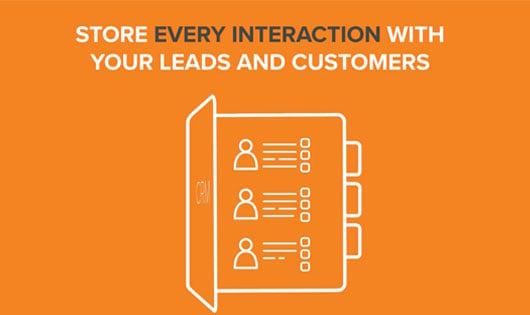
Don Draper may be fictional but his ideas have real value for your content marketing team.
Draper’s techniques are timeless and can give your content team the tools it needs to sell the value of your products to your customers.
Let’s make it an old fashioned and learn from Don himself...
Recommended reading:
“Technology is a glittering lure...”
“But there’s the rare occasion when the public can be engaged on a level beyond flash if they have a sentimental bond with the product.”
Draper exists in an age when technology was exciting and frightening – just like today.
But while social media was generations from being created, Draper is bang on the money about the metrics of engagement – for your marketing team to really engage with your customers you need to build a bond.
Where Draper is wrong is his point about technology – it’s not a glittering lure, it’s a valuable tool for creating that bond with your customers.
Facebook, Twitter, Pinterest, Instagram — all your social platforms have a deep pool of data on your customers which gives you insight into their behaviors and personalities.
This data is resource material for your content marketing team to build bonds between your business and your customers.
For instance, you can find out the times and days when your customers are most engaged – when your content marketing is most likely to build a bond.
Technology also enables your content marketing team to build a sales funnel between customer engagement and your business.
Take Pinterest.
Pinterest is the best social media channel for using content marketing to sell your company’s products.
Why? Because 90% of people on Pinterest use the platform help them decide what products to buy.
As Pinterest is the social channel that builds the best bond with customers, your content marketing team can advertise on it then use the Pinterest sales channel to create Product Pins that sell your goods on the platform.
This infographic by Dustn.tv speaks volumes about Pinterest's popularity in the online marketing sphere.

Pinterest is just one example of how technology works to bridge the gap between your content marketing team getting your customers interested in your products, and getting your customers to buy them.
Your team could use Instagram Stories Stickers to strike up a conversation between your brand and your customers.
Or your team could use awareness and consideration campaigns on Facebook ads to turn prospective customers into paying ones.
Whatever platforms you use, the idea is simple – reach out to your customers on the platform they’re most likely to engage with your brand, then create a seamless channel between your content marketing and your products (Draper would love it).
“If you don’t like what’s being said, change the conversation.”
We all make mistakes (each and every day, in the office and at home), and no one likes to be the subject of negative publicity.
When people have access to a huge amount of information on all businesses, the way to change the conversation around your company is to be honest – including apologizing for your mistakes.
Your content marketing team can take inspiration from some creative examples of brands owning up to their errors.
KFC and Samsung took out a full page advert in national newspapers, while Apple announced via Twitter that it was changing its artist payment policy.
My personal favorite is the approach taken by Johnson & Johnson.
After a line of O.B. tampons was taken off the shelves, creating a vitriolic backlash, Johnson & Johnson created a personal apology video for each of the 65,000 women on its database.
The response?
Instead of an angry conversation about the brand’s supply and demand failure, Johnson & Johnson became a positive viral sensation:
“Advertising is based on one thing: Happiness.”
While marketing and advertising are not one and the same, this quote from Draper offers a powerful lesson that your content team should put into practice – happiness sells.
Today, promoting mental health has (thankfully) become an important part of society, showing your customers that your products make them feel good is an ideal way of selling their value.
User-generated-content (UGC) is perfect for demonstrating your products make people feel happy.
You customers value the opinions of their peers as highly as recommendations by friends and family.
Your content marketing team can source and use UGC in many different ways:
- Publish customer content on your social media accounts and credit your customers
- Create customer testimonial videos and upload them to your website
- Ask your customers – they’ll often respond positively and it shows your brand is listening
Your team can use a variety of apps, tools, and plugins to start making the most of UGC.
User Submitted Posts is a WordPress plugin that lets your customers add their own content to your website, while Yotpo lets you use the power of visual marketing.
A crucial point for your content marketing team to remember is that it must get permission for any UGC it uses.
You need to get clearance from your customers to use or repost their content.
Failing to do this could land you in a copyright lawsuit, or cause a backlash against your business.
As Don Draper wisely points out: “the day you sign a client is the day you start losing one.”
Even after your content marketing team has won the battle of convincing people to buy your products, it needs to persuade them to come back again, and again, and again.
Putting Draper’s lessons into practice is a start, but your content team needs to constantly update it’s strategy – adding other Draper lessons, losing existing ones, and trying out new things.
The most valuable lesson your content marketing team can learn from Don Draper?
Don’t go stale, or you’ll be overtaken.







